After the winter, if you’ve ever found that the grass in your formerly beautiful lawn isn’t growing or that there are extensive dead spots, you’re not alone. Winter lawn damage can be significant in New Jersey and Pennsylvania, especially during winters with little snow coverage and freezing temperatures.
While there are certain forms of winter lawn damage that you can’t prevent (primarily those caused by the weather) others are entirely avoidable – if you know how. In this article about winter damage to lawns, we cover:
- what winter lawn damage is,
- what causes damage to your lawn over the winter,
- when you’re likely to notice it (unfortunately, that’s usually not until spring when the damage has already been caused), and
- how to prevent the worst of what winter throws at your lawn.
Why Does Your Lawn Die Over the Winter?
There is a plethora of reasons your grass might die during the winter; we describe the most common causes below. Unfortunately, it’s often difficult to determine whether your lawn has suffered damage until the snow melts and grass starts growing in spring. And, by then, it’s too late to take any preventive steps.
The best way to prevent winter lawn dieback is to prepare your lawn in autumn and early winter so it’s better able to survive winter injuries. Next, make sure you understand what happens in winter that can kill your turfgrass – and then do your best to avoid those things!
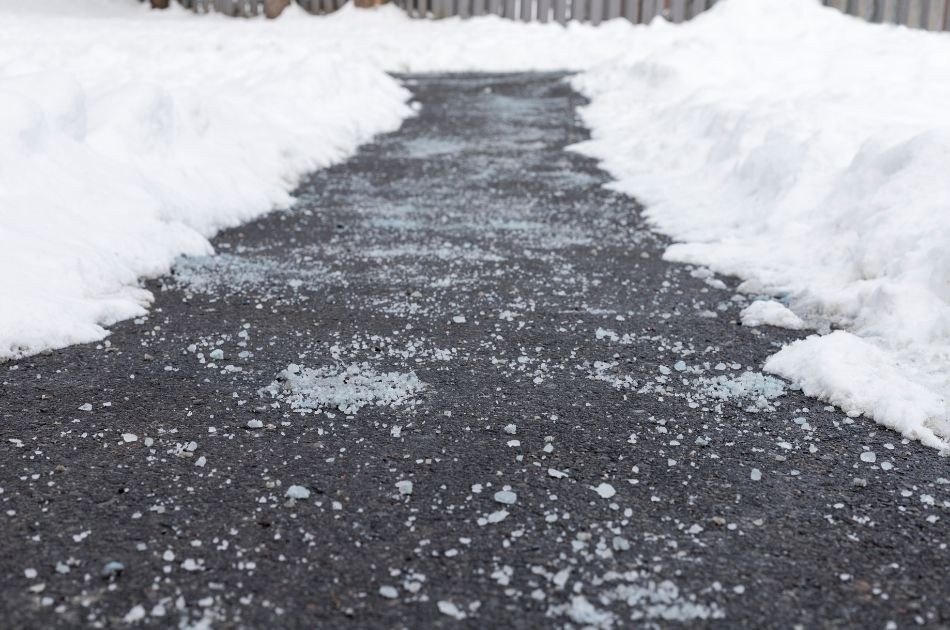
Common Causes of Winter Lawn Damage in New Jersey
Salt Damage to Lawns
Spreading salt on our roads may help keep drivers and pedestrians safe, but it takes a heavy toll on plants growing nearby, including lawns. Regardless of the type of salt or ice melt product used (on streets, sidewalks, drives, and walkways), these products are generally corrosive and toxic, often scorching and killing much of the plant life alongside roads or walkways where splashing is an issue.
Chloride salts draw moisture out of plants, including turfgrass, and destroy soil biology. Areas of lawn affected by salt damage will quickly turn brown and die.
Luckily, salt damage is one variety of winter lawn damage that you can prevent to some extent. Ways to avoid salt injury to your lawn include:
- Put a physical barrier between your lawn and the street – Cover the edge of your lawn with burlap sacks or landscape fabric as the weather changes and the lawn begins to go dormant. Do this before the first application of road salt, or the sacks will only trap road salt next to the grass. You can also put up a plastic screen or fencing to keep road salt from reaching your lawn.
- Use salt alternatives – On your own property, try using gritty substances like sand or kitty litter to keep surfaces from getting slippery.
- Shovel or pile snow away from plants – Avoid dumping or plowing snow where it can melt into your lawn next spring. If there’s salt in the meltwater, the lawn will die.
Winter Desiccation
Winter desiccation (the death of turfgrass leaves or plants from winter drying) is not only one of the most harmful forms of winter lawn damage but also the hardest to prevent.
Most often, winter lawn desiccation happens on lawns that have no snow cover. Without snow cover, grass has no insulation against harsh winter weather, such as freezing temperatures and cold winds. Dry, sunny, windy weather is especially damaging because it depletes the moisture from exposed surfaces on grass blades. If the ground is dry or frozen, the grass can’t replenish the lost moisture and will eventually dry out and die. Turfgrass blades will become brittle, dry, and have a burned look.
The best thing you can do is ensure that your lawn is as healthy as possible heading into winter. Regular watering, weed and pest management to minimize stress to turfgrass, and appropriate fertilizer treatments during the fall can all help ensure you have a green, vigorous lawn that can better withstand winter desiccation.
Other options for minimizing winter desiccation injury to your lawn include:
- Install windbreaks or snow fences – These can be helpful if you have a large, exposed area of lawn as they will reduce wind and may help more snow accumulate on the lawn.
- Apply a compost topdressing in late fall – This acts as an extra layer of protection for the plant’s crown.
- Cover the lawn with frost cloth or burlap – You won’t want to do this for the entire winter but if there’s no snow cover and cold, windy weather is forecasted, it may help to protect turfgrass from drying out. Just be sure to use something heavy to keep the protective covers in place!
- Water the lawn in winter – If the soil has dried out and temperatures are above freezing for a while, consider watering the lawn (and newly-planted shrubs and trees!). A well-hydrated lawn will fare better in cold, dry conditions.
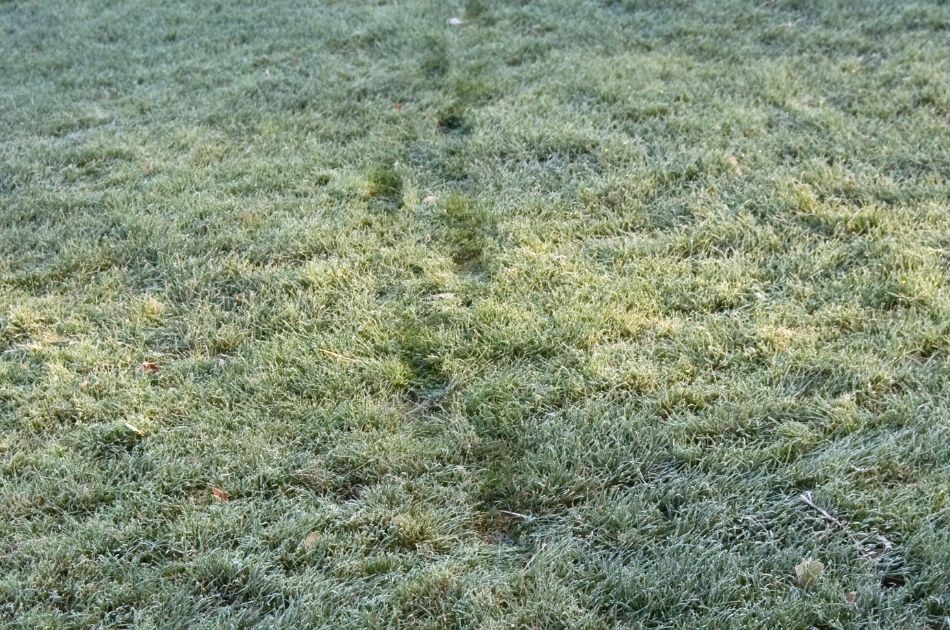
Freeze/Thaw Cycles
Another harmful winter weather-related form of lawn damage occurs when the temperature fluctuates between below and above freezing. The bigger the temperature swing and the more often it happens, the more damaging it can be.
This has to do with the way ice interacts with plant cells. Warming weather triggers grass to take up water. If the temperature then drops below freezing, the water inside the plants freezes. The sharp, crystalline structure of ice punctures plant cells and destroys the rigid structure of grass blades. The more often this happens, the more likely it is to be lethal.
Although you can’t control the weather, there are some things you can do to minimize the risk of winter freeze/thaw damage to your lawn.
- Mow your lawn higher during the fall – This will give more protection to the growing point of your turfgrass during freezing temperatures. For more details on how high to mow, check these tips on proper lawn mowing.
- Make sure your lawn has good drainage – Have a core aeration treatment in the fall if the soil is compacted. Excessive moisture can cause severe damage during freeze/thaw cycles.
- Reduce thatch – Have a dethatching treatment if there’s a thick layer of thatch. Heavy thatch can expose the plant’s growing point to freezing weather.
- Slow down on watering and fertilization later in fall – New, succulent growth is more susceptible to winter freeze damage.
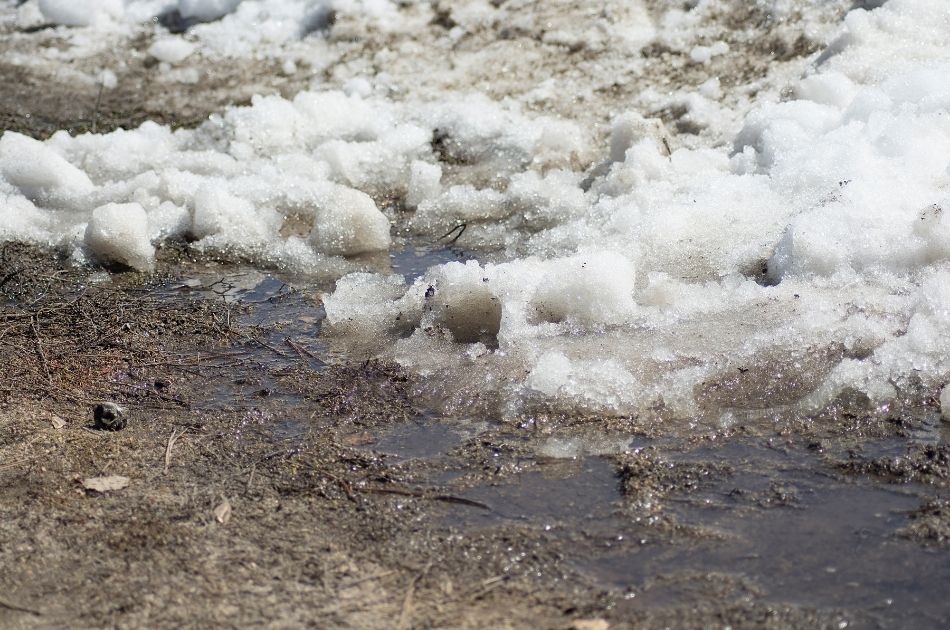
Freeze Smothering / Ice Encasement
Sometimes, ice can build up on your lawn. This usually happens in areas with compacted snow (such as areas where people or animals frequently walk) and lower-lying areas where water accumulates.
Grass that’s been covered with an impermeable layer of ice for an extended period of time (30 days or more, depending on the type of turfgrass) will usually die. The cause? The buildup of toxic gasses under the ice and the lack of oxygen.
Prevention consists mostly of eliminating low spots in the lawn and poorly-draining areas where water can accumulate and freeze. And avoid walking across your lawn in winter, even if it’s covered in snow.
Walking Across Frosty or Frozen Grass
Have you ever wondered what happens when you tramp across frozen grass during the winter? It turns out your boots are likely leaving a trail of destruction behind them.
When there’s frost on your lawn or temperatures are below freezing, the grass blades are frozen. Water inside the plants has turned into ice crystals that will slice into cells and damage, or even kill, them when you step on the grass.
If the damage is only to the grass blades, the lawn will likely recover in spring (although it may need a little TLC when spring arrives). But if the crown has been injured or killed, you may find brown, dead spots in your lawn next spring.
Prevention is simple – keep traffic across your lawn to an absolute minimum during the winter. Every time you walk on frozen grass, blades will break and the growing point/crown may be killed.
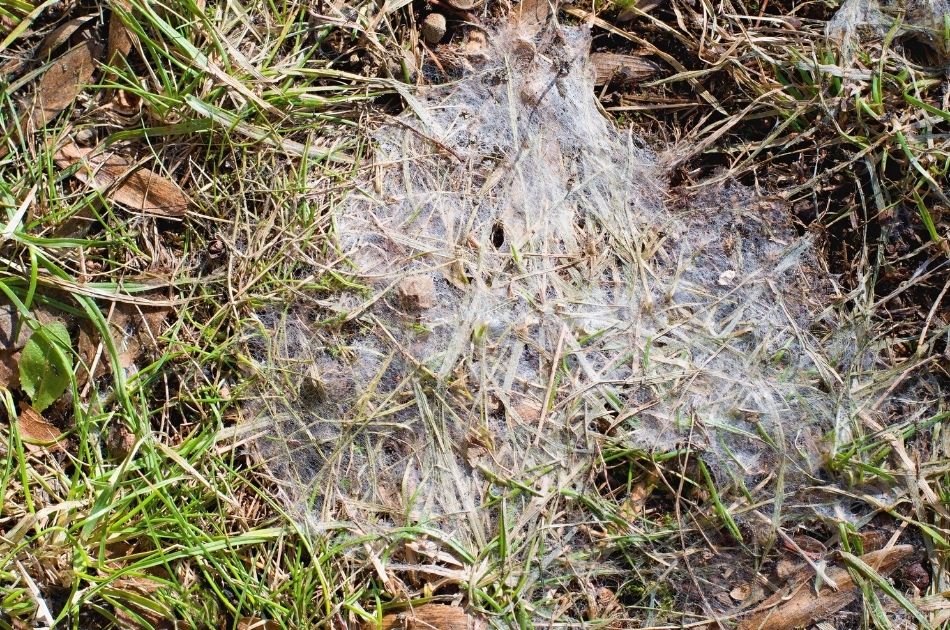
Snow Mold
Finally, snow mold is another frequent cause of winter lawn damage. It’s caused by a fungus that kills turfgrass and thrives in cool, wet conditions. In New Jersey, there are two common types of snow mold:
- Gray snow mold, caused by Typhula incarnata
- Pink snow mold (also called fusarium patch), caused by Microdochium nivale
Pink snow mold damage is more common because it occurs when there’s no snow cover (late winter and early spring are perfect conditions for this quick-spreading fungus). It’s also more damaging because it kills both the crown and roots of turfgrass and can infect large portions of your lawn. In contrast, gray snow mold only develops after at least 3 or 4 weeks of snow cover.
Once snow melts, check your lawn for signs of snow mold. If you notice any, act immediately. First, break up the mold colonies in the affected areas with a rake. Then, your primary goal is to get the area as dry as possible quickly. Pink snow mold outbreaks on high-value turf areas later in spring can be controlled with timely fungicide applications applied by a lawn care professional.
Ways to prevent snow mold include the following:
- Keep your lawn mowed until it stops growing in the fall; tall matted grass harbors the mold.
- Keep your lawn clear of leaves and debris.
- Aerate your lawn in the fall to improve draining; poorly drained areas are more susceptible to snow mold problems.
- Avoid overfertilization in fall, especially in areas where gray mold has been a problem in the past.
- Preventive fungicide applications can also be helpful if applied in a timely manner and targeted specifically for the right type of fungus.
For more information on snow mold in New Jersey, see this publication from Rutgers Cooperative Extension.
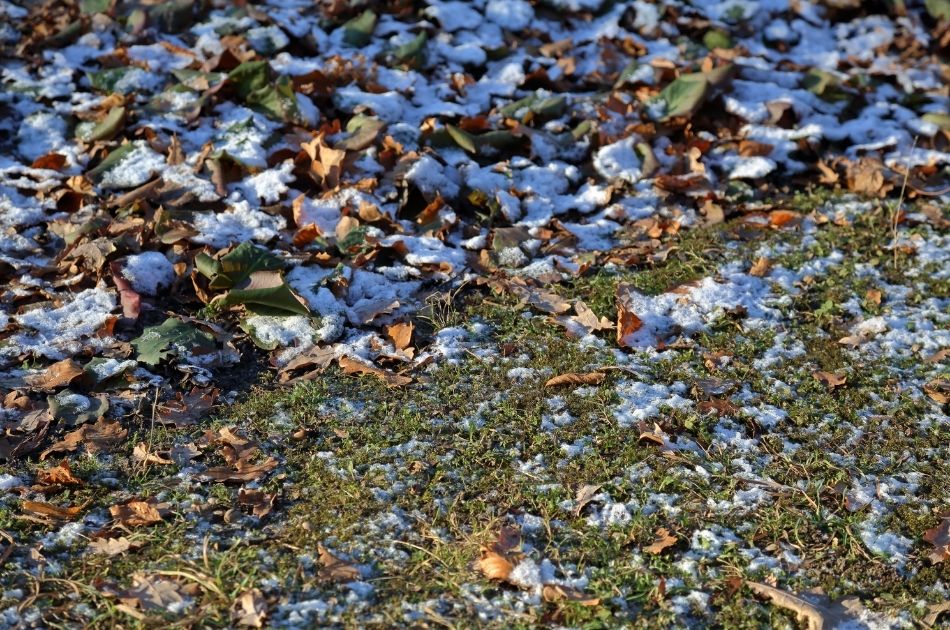
Lawn Care for Every Season
Identifying and preventing winter lawn damage can be a challenge. However, it mostly comes down to a good winter preparation schedule in the fall.
If you are unsure about what lawn care tasks you should include in your fall checklist, you can rely on Organic Plant Care LLC for thorough winter preparation guidance.
Our lawn care specialists are happy to evaluate your lawn and recommend any actions that will help your lawn survive winter with as little damage as possible. And even if winter has arrived, it’s not too late! Give us a call today to see how we can help.
GET THE LATEST NEWS
Subscribe to the Organic Plant Care Newsletter and get timely and helpful tips and updates monthly.
There's no spam - we promise!





